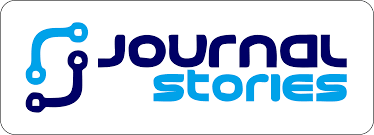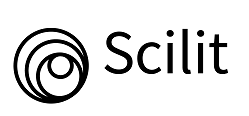ANALISIS PROFITABILITAS SISTEM USAHATANI TUMPANGSARI TEMBAKAU DENGAN BAWANG MERAH DIKECAMATAN JEROWARU KABUPATEN LOMBOK TIMUR
TheProfitability Analysis Of Intercovery Farming System Of Tobacco and Onion In Jerowaru Sub District East Lombok Regency
DOI:
https://doi.org/10.59896/gara.v19i2.282Keywords:
Tobacco, Shallots, Cost, Profit, Profitability, R/C Ratio, t-testAbstract
The study aims to (1) analyze the comparative benefits between tobacco and shallot intercropping farming with tobacco monoculture, and (2) identify the advantages of tobacco and shallot intercropping farming systems in Jerowaru District, East Lombok Regency, using a comparative method. The sample was determined by purposive sampling and determination of 39 respondents using the Slovin formula for each tobacco and shallot intercropping farmer and monoculture farmer. Data analysis includes cost analysis, revenue, profit, profitability, R/C Ratio and t-test.
The results of this research show: (1) Tobacco and shallot intercropping farming is more profitable than the tobacco monoculture farming system because the profit of tobacco and shallot intercropping farming in Jerowaru District is IDR. 64,745,211/LLG or Rp. 113,588,090/Ha, while the profit from tobacco monoculture farming is IDR. 60,590,034/LLG or Rp. 120,947,584/Ha, with a profitability level of intercropping tobacco of 85% and shallots of 16% per planting season, while in monoculture farming the profitability is 90% and both are greater than the Net Profit Margin, namely 5%, meaning that intercropping of tobacco and Shallots and tobacco monoculture farming are profitable or have a profit that is worth developing. (2) The advantages of the tobacco and shallot intercropping farming system in Jerowaru District include the physical aspect, namely the cultivation process, the shelf life of the shallot commodity is longer, the quality of the shallots produced is better in terms of color, the risk of being attacked by pests in the intercropping farming system lower and from an economic perspective, namely lower production costs, income from the intercropping farming system is greater than from the monoculture system.
References
Aini, N., U. Abdullah, dan I.G.L.P. Tanaya. (2016). Analisis Komperatif Usahatani Monokultur Tembakau Rakyat dan Tumpangsari Tembakau Rakyat dengan Cabai di Kecamatan Pringgebaya Kabupaten Lombok Timur.Makalah Penelitian Jurusan Program Studi Agribisnis Fakultas Pertanian Universitas Mataram.Mataram.
Apriansyah. (2018). Analisis Kelayakan usahatani Tumpangsari Cabai Merah (Capsicum Annum L) dan Bawang Merah (Allium Cepa L) di Lahan Pasir Kabupaten Bantul. Program Studi Agribisnis Fakultas Pertanian Universitas Sarjanawiyata Tamansiswa. Yogyakarta.
Aulia, A. (2016). Perbandingan Pendapatan Usahatani Monokultur Sayuran dengan Usahatani Tumpangsari Kopi dan Sayuran di Desa Margamulya Kecamatan Pangalengan Kabupaten Bandung. Skripsi IPB. Bogor
Avila, T. (2022). Analisis Keuntungan Usahatani Tumpangsari Tanaman Organik Kailan, Pakcoy, dan Tomat di Porkab Desa Sumberejo Kota Batu. Skripsi Fakultas Pertanian Univeritas Tribhuwana Tunggadewi. Malang.
Dinas Perkebunan Provinsi Jawa Timur. (2012). Mekanisasi Pengolahan Tanahdan Pasca Panen Tembakau Rajangan Jawa. Surabaya.
Dumairy. (1997). Perekonomian Indonesia. Jakarta: Erlangga.
Harahap, S.S. (2013). Analisis Kritis Atas Laporan Keungan. Jakarta: Raja Grafindo Persada
Mubyarto. (1994). Pengantar Ekonomi Pertanian, Pustaka LP3ES. Jakarta.
Purwanto A. & Budi M.T. (2018). Pengaruh Jumlah Tanggungan Terhadap Tingkat Kesejahteraan Ekonomi Keluarga Pekerja K3L Universitas Padjajaran 1 (2): 33-34
Soetriono, et al. (2006). Pengantar Ilmu Pertanian. Jember: Bayu Media.
Sukirno, S. (2002). Pengantar Teori Mikro Ekonomi. Raja Grafindo Persada. Jakarta.
Suratiyah, K. (2015). Ilmu Usahatani. Penebar Swadaya. Jakarta Timur
Suratiyah, K. (2008). Ilmu Usahatani. Jakarta: Penebar Swadaya.
Warman, et al. (2018). Mengkaji Sistem TanamTumpangsari Tanaman Semusim. In Proceeding Biology Education Conference: Biology, Sciense, Enviromental, and Learning 15 (1): 791-794.
Downloads
Published
How to Cite
Issue
Section
License
Copyright (c) 2025 Efendy Efendy, Aeko Fria Utama FR

This work is licensed under a Creative Commons Attribution-ShareAlike 4.0 International License.














